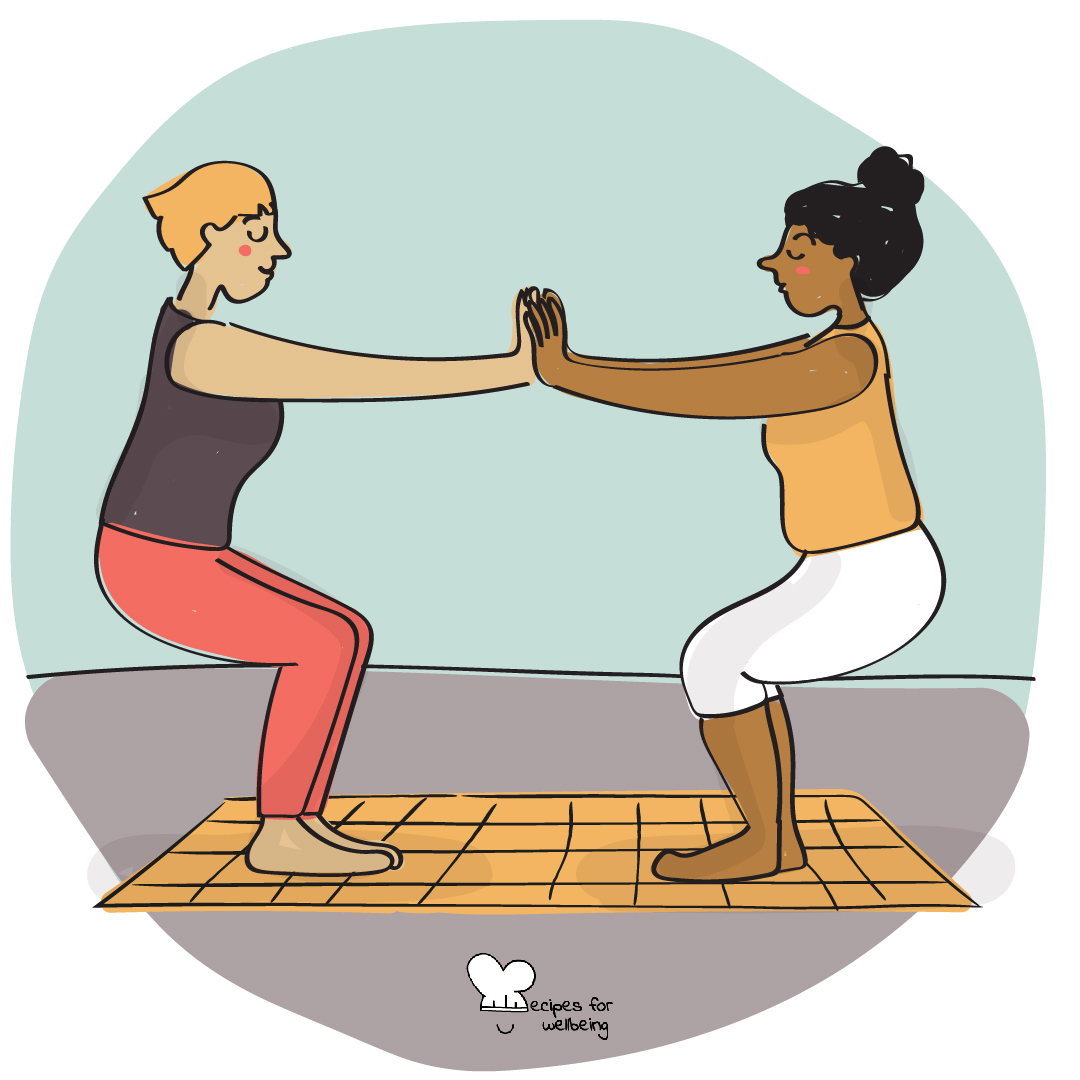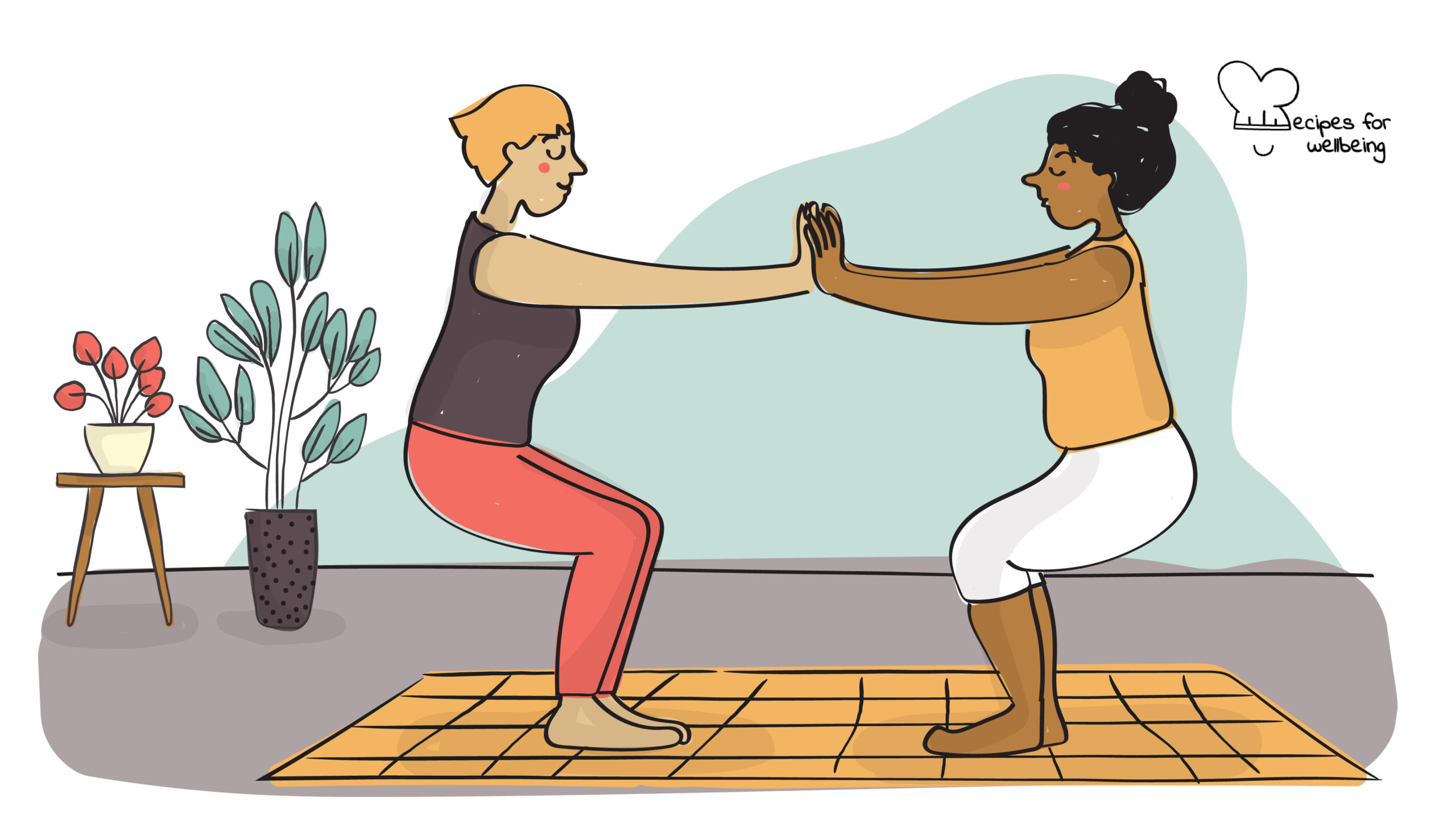
Mindful awareness through the body
The best way to capture moments is to pay attention. This is how we cultivate mindfulness. Mindfulness means being awake. It means knowing what you are doing. ―Jon Kabat-Zinn
 Serves: 11-25 people
Serves: 11-25 people
 Difficulty: Easy
Difficulty: Easy
 Total time: 11-30 minutes
Total time: 11-30 minutes
 Ingredients: People (multiples of 3)
Ingredients: People (multiples of 3)
 Wholebeing Domains: Awareness, Community, Radical Care, Ritualising
Wholebeing Domains: Awareness, Community, Radical Care, Ritualising
 Wholebeing Skills: Closeness, Embodiment, Mind-body-connection, Movement, Reciprocity, Relating to Others, Self-awareness, Trust
Wholebeing Skills: Closeness, Embodiment, Mind-body-connection, Movement, Reciprocity, Relating to Others, Self-awareness, Trust

Mindful awareness through the body
 Description
Description
Using the body to cultivate mindful awareness and become responsive.
One of the most important dimensions to empower social change is to develop a responsive consciousness that listens to the feedback of the system and acts accordingly to inspire positive change. Cultivating mindful attention is one of the most effective ways to increase our capacity to be more present, and therefore more responsive, in the world.
The following activity offers a simple, practical somatic experience to explore mindful awareness. It uses the body as the entry point to cultivate mindful attention, learn to let go of the need to control everything in our lives, and find aliveness in the here and the now. Because this activity includes touch, make sure that everyone in your group is comfortable with this. Alternatively, you can lead other mindfulness-oriented activities, such as our body scan meditation, calm your nerves, heart-breathing meditation, eye-gazing meditation, alternate nostril breathing, simple breathing exercise, colour breathing meditation, and mindful eating.
 Steps
Steps
Step 1 – Pairs (10’)
Divide the group in pairs and ask one of the partners (Partner A) to close their eyes and to place their hand at the back of their partners’ hand (Partner B). The hand should rest as gently and lightly as possible. At this point, Partner B starts guiding the hand of the partners with closed eyes, making small and easy shapes to begin with. As Partner A gets more comfortable with trusting their partner, Partner B can start experimenting with different shapes and patterns, changing the speed and the rhythm and inviting Partner A to move around the space following their guidance. Partner B can also follow a pattern for a few seconds and then break it to demonstrate how easily we become creatures of habit. Do this for 5 minutes, then swap.
Step 2 – Triads (20’)
After both partners have gone, create triads where there will be one person with their eyes closed but two people guiding in the same format as before. This adds a layer of complexity, where the guiding partners must be attentive and responsive to each other’s intentions and the partner with their eyes closed must be able to let go and fully trust in their partners. After 5 minutes, swap and continue until all three partners had a go at keeping their eyes closed and being guided.


 Arabic
Arabic Chinese (Simplified)
Chinese (Simplified) Dutch
Dutch English
English French
French German
German Italian
Italian Portuguese
Portuguese Russian
Russian Spanish
Spanish